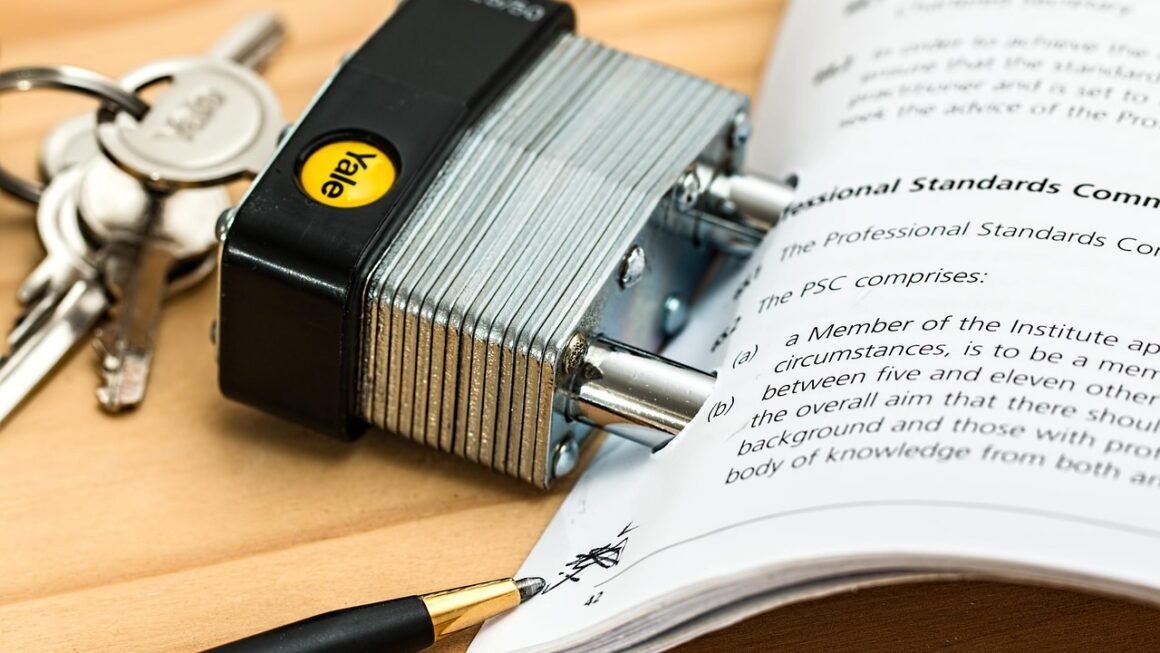Investing can feel like navigating a turbulent sea, with potential rewards on the horizon but also the constant threat of unexpected storms. Before setting sail, understanding your personal “risk tolerance” is absolutely crucial. It’s the compass that guides your investment decisions, helping you stay the course toward your financial goals without capsizing under pressure. This blog post will explore the multifaceted nature of risk tolerance, helping you assess your own and utilize that knowledge to make informed investment choices.
Understanding Risk Tolerance: What Is It and Why Does It Matter?
Defining Risk Tolerance
Risk tolerance is your capacity to handle the potential losses associated with investments while pursuing higher returns. It reflects your comfort level with market volatility and the possibility of seeing your portfolio’s value fluctuate. It’s not simply about how much money you have, but rather your emotional and psychological ability to stomach potential downturns.
- Key Factors Influencing Risk Tolerance:
Age: Younger investors typically have a longer time horizon and can afford to take on more risk.
Financial Goals: Long-term goals, such as retirement, may allow for higher-risk investments.
Income and Net Worth: Higher income and net worth often allow for greater risk-taking capacity.
Investment Knowledge: Understanding investment principles can increase comfort with risk.
Personal Experiences: Past investment successes and failures can shape risk tolerance.
Time Horizon: How long until you need the money you’re investing? A longer time horizon allows for more risk.
Why Understanding Risk Tolerance Matters
Knowing your risk tolerance is paramount for several reasons:
- Avoid Emotional Investing: Understanding your risk capacity prevents you from making impulsive decisions during market dips, such as selling low out of fear.
- Portfolio Alignment: Ensures your investment portfolio aligns with your comfort level, preventing unnecessary stress and anxiety.
- Realistic Expectations: Sets realistic expectations about potential returns, helping you avoid chasing unrealistic gains that often come with excessive risk.
- Goal Achievement: Increases the likelihood of achieving your financial goals by selecting suitable investments that balance risk and reward.
- Better Sleep at Night: Knowing your portfolio is aligned with your risk tolerance allows you to rest easier knowing you’re not taking on excessive risk.
- Example: Imagine two investors, Sarah and John. Sarah is 25, has a stable job, and is saving for retirement in 40 years. John is 60, approaching retirement, and needs his investments to provide income within the next 5 years. Sarah likely has a higher risk tolerance than John. If Sarah were to panic and sell her investments during a downturn, she would have much more time to recover. John, on the other hand, would severely impact his near-term financial security by making a similar decision.
Assessing Your Own Risk Tolerance
Risk Tolerance Questionnaires and Tools
Several online risk tolerance questionnaires can help you gauge your comfort level with risk. These questionnaires typically ask about your investment goals, time horizon, and reactions to hypothetical investment scenarios. Financial advisors also often use these tools.
- Examples of Questions:
“How would you react if your portfolio lost 10% of its value in a short period?”
“What is your primary investment goal: growth, income, or capital preservation?”
“How long do you plan to invest your money?”
- Actionable Takeaway: Search for “risk tolerance questionnaire” online and complete a few to get a better understanding of your personal risk profile. Consider taking the same questionnaire at different points in your life to account for changing circumstances.
Self-Reflection and Introspection
Beyond questionnaires, self-reflection is critical. Consider past investment experiences, both positive and negative. Analyze how you reacted emotionally during market fluctuations.
- Questions to Ask Yourself:
“How did I react during the 2008 financial crisis?”
“Have I ever made impulsive investment decisions based on fear or greed?”
“What keeps me up at night when it comes to my finances?”
“What are my biggest financial regrets and what did I learn from them?”
- Practical tip: Keep a journal of your investment experiences and emotional responses. This can provide valuable insights over time.
- Example: Consider someone who sold all their stock holdings during the COVID-19 pandemic market crash in March 2020. This behavior indicates a lower risk tolerance than someone who stayed the course or even bought more stocks during the downturn. This investor experienced a loss and missed out on the subsequent recovery.
Risk Tolerance and Investment Strategies
Matching Investments to Risk Profiles
Once you’ve assessed your risk tolerance, the next step is to align your investment strategy accordingly.
- Low-Risk Tolerance:
Investment Options: Bonds, certificates of deposit (CDs), money market accounts, dividend stocks, conservative ETFs.
Portfolio Allocation: A higher allocation to fixed-income investments and a lower allocation to equities.
Goal: Capital preservation and modest growth.
- Moderate-Risk Tolerance:
Investment Options: A mix of stocks and bonds, balanced mutual funds, ETFs that track broad market indexes.
Portfolio Allocation: A balanced allocation between fixed income and equities.
Goal: Moderate growth with some income.
- High-Risk Tolerance:
Investment Options: Stocks, growth stocks, small-cap stocks, emerging market stocks, real estate, venture capital.
Portfolio Allocation: A higher allocation to equities and a lower allocation to fixed income.
Goal: Aggressive growth.
Diversification as a Risk Management Tool
Regardless of your risk tolerance, diversification is essential. Diversifying your portfolio across different asset classes, industries, and geographies can help mitigate risk. “Don’t put all your eggs in one basket.”
- Benefits of Diversification:
Reduces the impact of any single investment on your overall portfolio.
Increases the potential for consistent returns over time.
Allows you to participate in different market sectors and economic cycles.
- How to Diversify:
Invest in a mix of stocks, bonds, and other asset classes.
Choose investments that are not highly correlated.
Consider international investments to diversify geographically.
- Example: Instead of investing solely in technology stocks, a well-diversified portfolio might include stocks from the healthcare, consumer staples, and financial sectors, as well as bonds, real estate, and international investments.
Adjusting Your Investment Strategy Over Time
Life Changes and Risk Tolerance
Risk tolerance is not static; it can change over time due to various life events and circumstances.
- Factors That Can Influence Risk Tolerance:
Marriage: May lead to a more conservative approach to protect family assets.
Having Children: Similar to marriage, may prompt a more risk-averse strategy.
Career Changes: Job loss or significant income increase can affect risk tolerance.
Retirement: As retirement approaches, reducing risk becomes increasingly important.
Health Issues: Unexpected medical expenses can influence investment decisions.
Periodic Portfolio Review and Rebalancing
Regularly review your portfolio and rebalance it to maintain your desired asset allocation. Rebalancing involves selling assets that have outperformed and buying assets that have underperformed to bring your portfolio back into alignment.
- Why Rebalance?
To maintain your target asset allocation and risk profile.
To take profits from investments that have performed well.
To buy investments that are undervalued.
- How Often to Rebalance:
At least annually, or more frequently if market conditions are volatile.
When your asset allocation deviates significantly from your target.
- Example: If your target asset allocation is 60% stocks and 40% bonds, and your portfolio has drifted to 70% stocks and 30% bonds due to strong stock market performance, you would sell some stocks and buy more bonds to rebalance.
Common Mistakes Related to Risk Tolerance
Taking on Too Much Risk
A common mistake is taking on more risk than you can comfortably handle, leading to emotional stress and potentially poor investment decisions.
- Signs You Might Be Taking on Too Much Risk:
You experience significant anxiety when the market fluctuates.
You frequently check your portfolio’s performance.
You make impulsive decisions based on market news.
You are losing sleep over your investments.
Being Too Conservative
Conversely, being too conservative can hinder your ability to achieve your financial goals, especially over the long term.
- Signs You Might Be Too Conservative:
Your portfolio is not keeping pace with inflation.
You are missing out on potential growth opportunities.
You are overly focused on capital preservation.
You are not taking advantage of your long-term investment horizon.
Ignoring Risk Tolerance
Perhaps the biggest mistake is ignoring risk tolerance altogether and making investment decisions based on hearsay, trends, or gut feeling.
- Consequences of Ignoring Risk Tolerance:
Inconsistent portfolio performance.
Emotional stress and anxiety.
Failure to achieve financial goals.
Potentially significant financial losses.
- Example: Blindly following the advice of a friend or online forum without considering your own risk tolerance can be disastrous. What works for one person may not work for another. A stock tip that proves profitable for your friend might cause you to panic sell during a dip if it doesn’t align with your risk profile.
Conclusion
Understanding and managing your risk tolerance is a cornerstone of successful investing. By carefully assessing your comfort level with risk, aligning your investment strategy accordingly, and periodically reviewing and adjusting your portfolio, you can increase the likelihood of achieving your financial goals while minimizing stress and anxiety. Remember that risk tolerance is a personal and dynamic factor that should be considered throughout your investment journey. Take the time to understand your own risk profile, and you’ll be well-equipped to navigate the complexities of the investment world with confidence.



